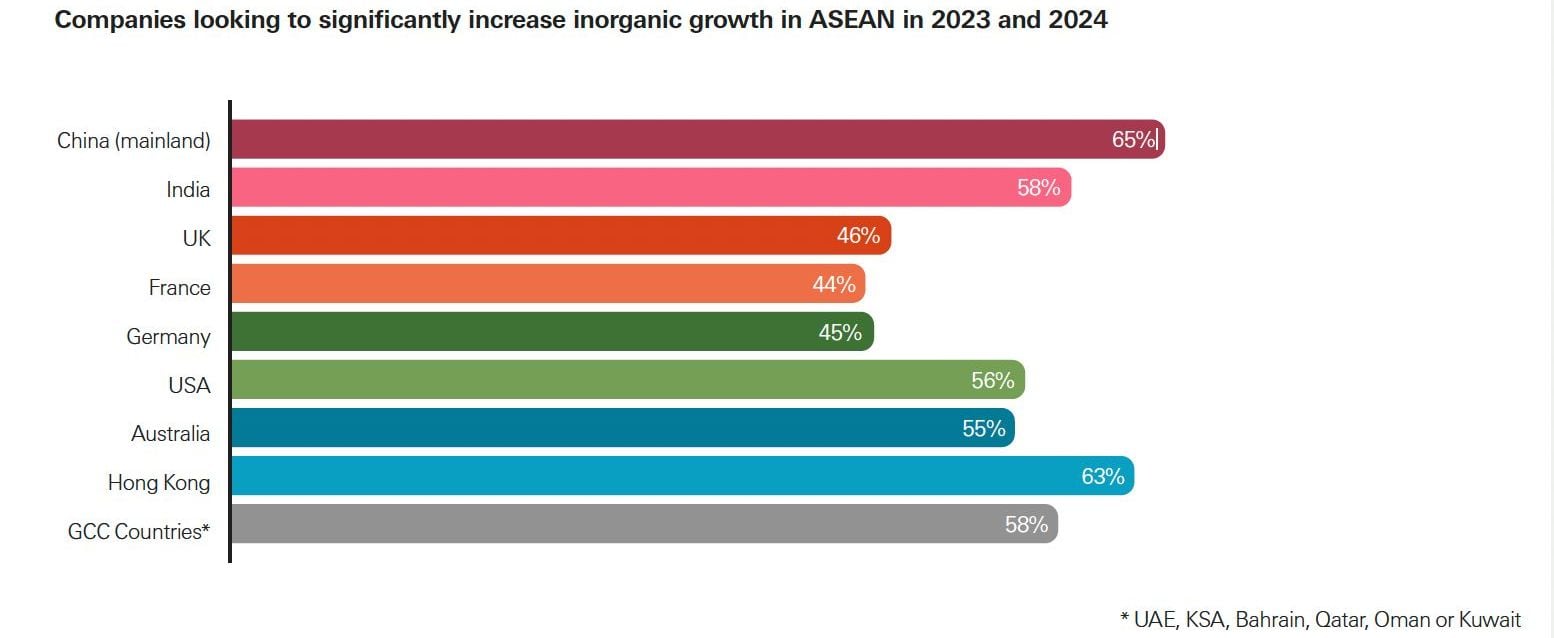Recent data from fDi Markets shows that manufacturing foreign direct investment into Asean now exceeds that going into China. This could be presented as evidence of the view that Asean’s gain is China’s loss, as geopolitical tensions drive international businesses to diversify their supply chains.
But this conclusion misses two facts. First, that Chinese manufacturers are themselves expanding their presence in Southeast Asia. A third of the region’s manufacturing FDI last year came from China, which was more than three times the amount from the United States, Korea or Japan, according to fDi Markets.
Second, what these headline numbers don’t show is that Chinese investment in Asean goes well beyond low-cost assembly to encompass advanced manufacturing, technology and even professional services. China isn’t just the biggest source of FDI into Asean, its investment in the region is driven by Asean’s broad fundamental strengths more than narrower ambitions to simply diversify supply chains or reduce the cost of production.
We are seeing this trend among our own clients. At HSBC, our commercial banking activity for Chinese corporates doing business in Asean increased by around 60% in 2023, compared with the previous year. We also recorded an 80% increase in the number of Chinese corporates entering new Southeast Asian markets in 2023 versus 2022. Among our Chinese clients, we’re seeing strong interest in expanding into Singapore, followed by Vietnam, Thailand, Malaysia and Indonesia.
Asean’s appeal
Chinese businesses are drawn to Asean primarily by growth opportunities – and they are ahead of global peers in engaging with the region. A survey of 3,500 global businesses that we conducted last year found that its skilled workforce, growing digital economy, competitive wages and sizeable regional market were among Asean’s top attractions.
The study also found that, compared with businesses from the US and Europe, a higher proportion of firms from mainland China and Hong Kong had already achieved organic growth in the region and were looking to increase mergers and acquisitions activity there.
 Source: HSBC
Source: HSBC
Asean, already China’s largest trading partner, offers a wide range growth opportunities to Chinese businesses, underpinned by its solid economic fundamentals, increasingly sophisticated manufacturing capabilities, supply chain and logistics efficiencies, cultural similarities and growing middle class.
Electric vehicles are a case in point. China is the world’s biggest EV producer and market. Leading Chinese EV makers are now becoming dominant in Southeast Asia, where they account for some 75% of all EV sales and brands including BYD, Geely and Great Wall Motor are scaling up their manufacturing operations. This expansion in EVs – which is also reflected in strengthening ties in the wider electronics sector - is underpinned by Asean’s move up the manufacturing value chain and the promise of large consumer markets in which the middle class is growing by 5% a year. A similar bright spot is in renewable energy, as Chinese corporates show increasing interest in Asean markets, supported by government efforts across the region in the transition to net zero.
Our survey last year found that 31% of respondents saw Asean as a leader in e-commerce and digital platforms. With China having pioneered and then scaled up these technologies, it isn’t surprising that Chinese businesses now see growth opportunities in neighbouring Asean as the region seeks to unlock an additional US$2 trillion of growth by 2030 through the implementation of its Digital Economy Framework Agreement. Notable examples include TikTok's acquisition of 75% of GoTo's e-commerce unit Tokopedia in Indonesia for US$840 million and Alibaba’s investment of an additional US$630 million into its Singapore e-commerce subsidiary Lazada.
The synergies between China and Asean are clear. Over the last few decades, China has achieved leadership positions in many of the sectors that define today’s economy, including digital, advanced manufacturing, renewable energy and EVs. Asean’s own remarkable growth journey means it is now in a position where it can also manufacture or develop these products and has large-scale demand for them. Opportunity, proximity and these complementary strengths will continue to drive growth in this economic relationship.
Amanda Murphy is head of commercial banking, HSBC, South and Southeast Asia (also co-head of commercial banking, Asia-Pacific). Joseph Ma is head of commercial banking, HSBC, China.









